Kovatera Powers Glencore’s Onaping Depth Mine with BEVs
Glencore’s Onaping Depth Project is at the forefront of mine electrification, and Kovatera has been selected to supply battery-electric utility machines and personnel carriers for this initiative. This selection reinforces Kovatera’s leadership in sustainable underground mining solutions and highlights the industry’s confidence in electric mining vehicles (BEVs). With Glencore’s investment in electrification, mining operations are transitioning to cleaner, more efficient technologies that significantly reduce ventilation costs and environmental impact.
The shift toward battery-electric mining vehicles (BEVs) is reshaping underground mining by reducing exhaust emissions, lowering heat generation, and cutting overall ventilation costs. As mining companies aim to optimize operations while meeting sustainability goals, adopting electric mining equipment is proving to be a smart move.
The Role of Ventilation in Underground Mining
Underground mines require extensive mine ventilation systems to regulate diesel particulate matter (DPM), nitrogen oxides (NOx), carbon monoxide (CO), and other hazardous emissions produced by diesel-powered machinery. These contaminants not only compromise air quality but also increase health risks for miners, making proper ventilation a necessity rather than an option.
Additionally, diesel engines generate considerable heat, increasing the need for cooling measures. In deep mines, where temperature is already high, preventing heat stress is just as crucial as eliminating airborne pollutants.
Key ventilation cost factors in diesel-powered mining operations:
- High energy consumption for air circulation and cooling
- Extensive infrastructure, including ventilation shafts and auxiliary fans
- Compliance with stringent regulatory air quality requirements
Transitioning to electric mining vehicles can alleviate these challenges, bringing both economic and environmental advantages.
Impact of Electric Mining Vehicles on Mine Ventilation
Zero Exhaust Emissions
BEVs eliminate diesel combustion, drastically reducing the volume of DPM, NOx, and CO in mine air. With fewer airborne contaminants to dilute, mining companies can reduce the frequency and intensity of mine ventilation cycles, lowering overall energy costs.
Reduced Heat Load in Mine Operations
Unlike diesel engines, electric motors generate significantly less heat, minimizing the need for extensive mine ventilation and cooling systems. This not only improve working conditions but also reduces the strain on ventilation infrastructure.
Optimized Ventilation System Design
Electric mine vehicles enable mining operations to rethink mine ventilation system strategies. Mines designed for BEV fleets can scale down ventilation shafts and fan systems, leading to significant capital savings. Some deep mines have explored ventilation-on-demand (VOD) systems, where airflow is dynamically adjusted based on vehicle presence and activity levels, further optimizing energy consumption.
Energy Efficiency and Cost Savings
Since ventilation accounts for up to 50% of a mine’s total energy use, cutting ventilation demand translates to millions of dollars in annual savings. Mining operations that integrate electric mining vehicles report a substantial decrease in electricity costs associated with running large mine ventilation fans.
Extended Mine Viability and Operational Flexibility
With lower heat and emissions, electric mining vehicles allow for deeper mining operations without exponentially increasing cooling and ventilation costs. This extends the economic lifespan of mines and supports expansion without the need for additional infrastructure investments.
Additional Benefits of Electric Mining Vehicles
Improved Worker Health & Safety
The elimination of diesel emissions not only enhances air quality but also mitigates respiratory risks for miners. Moreover, reduced noise levels in BEVs create a more comfortable and safer underground working environment.
Lower Maintenance and Operating Costs
Electric mining equipment features fewer moving parts, reducing maintenance requirements compared to diesel-powered machinery. BEVs eliminate expenses associated with:
- Fuel procurement and storage
- Engine oil changes and cooling system upkeep
- Diesel exhaust filtration and emission compliance
Regulatory Compliance and ESG Goals
With increasing government regulations on diesel emissions and a stronger industry focus on environmental, social, and governance (ESG) initiatives, mine electrification is becoming a strategic priority for major mining companies. BEV adoption supports carbon reduction targets and enhances corporate sustainability efforts.
Adopting Electric Mining Vehicles: A Smart Investment for the Future
Although the initial capital investment in electric mining vehicles may be higher, the long-term benefits far outweigh the costs. As battery technology advances and charging infrastructure becomes more efficient, the total cost of ownership (TCO) for electric mining equipment is becoming increasingly competitive.
Key Takeaways:
- Significant ventilation cost reductions due to zero emissions and lower heat generation.
- Lower total energy consumption, leading to improved operational efficiency.
- Regulatory and environmental compliance, reducing the risk of future restrictions on diesel-powered equipment.
- Better working conditions for miners, improving workforce retention and productivity.
Kovatera’s Electric Mining Vehicles
Kovatera offers purpose-built electric mining vehicles designed for underground operations, providing zero-emission solutions without compromising performance.
KT300e – A battery-electric mining utility truck designed for underground transportation of personnel and materials. It provides a reliable and sustainable alternative to diesel-powered mining trucks
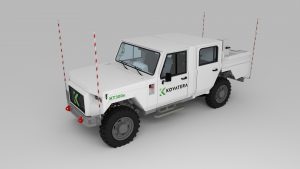
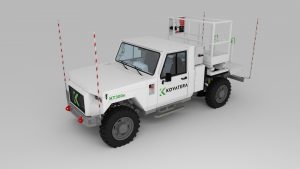
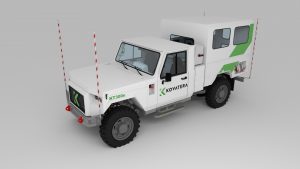

KM200e – A battery-electric underground mining tractor built for material handling in confined spaces. With its all-electric drivetrain, it eliminates diesel emissions, supports efficient underground logistics, and contributes to smoother mining operations.
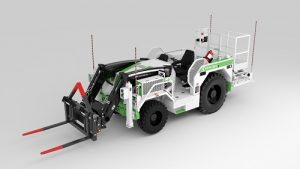

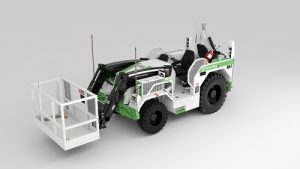
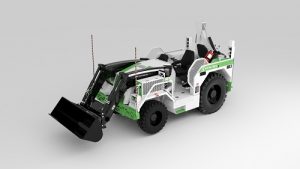
By integrating Kovatera’s electric mining vehicles into their fleet, mining companies can improve operational efficiency, cut ventilation-related expenses, and advance sustainability initiatives.
Conclusion
As the mining industry evolves, electric mining vehicles are emerging as a viable, cost-effective, and environmentally responsible solution. By significantly reducing ventilation requirements, improving workplace safety, and driving operational efficiencies, BEVs represent the future of underground mining.
Mining companies that adopt electrification today will gain a competitive edge in operational sustainability and cost efficiency, leading to a greener, more profitable future.
Want to learn more? Contact Us to explore Kovatera’s industry-leading electric mining solutions.
